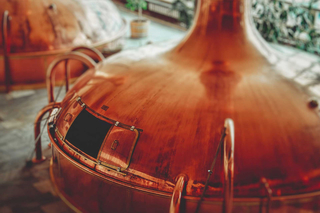Key findings
Minnesota's craft brewing industry
- In 2012, there were 39 breweries in Minnesota. By 2019, that number had grown to 183.
- Minnesota’s craft brewing industry generated $1.0 billion of economic activity in Minnesota during 2019 (includes impacts generated from beer production, food service, and capital investments).
- Of this, $383.9 million was labor income.
- The industry supported 8,435 workers in the state.
- These figures include impacts generated from beer production, food service, and capital investments.
- 75 percent of breweries that responded to the survey made a capital investment (building or equipment) in 2019.
- 49 percent moved into a new market or expanded distribution, and nine percent started distributing in 2019.
- Food trucks remained more common than on-site restaurants.
Impacts of COVID-19
Business sales and profitability
- Based on Extension’s assumptions and the craft brewer survey, Minnesota’s economy lost $186.6 million in economic activity from brewers due to COVID-19; 1,050 jobs were affected.
- Craft breweries rely heavily on on-site sales, with survey respondents reporting 73 percent of sales made via their physical location.
- Survey results show an 18 percent drop in sales across all breweries and a decrease in employment of 10 percent due to COVID-19 restrictions.
- More than one-third (37 percent) of breweries did not make capital expenditure investments in 2020. The handful of breweries that made investments focused them on responding to COVID-19.
- Many breweries changed their operational model in the face of declining on-site sales and increased demand for off-site sales. These changes came at a cost, which many breweries absorbed into their margins.
Financing and government relief
- A few breweries reported issues with financing, ranging from banks backing out of deals to the inability to make loan payments due to decreases in revenue.
- Both the federal and state government authorized COVID-19 relief packages for businesses struggling with the pandemic. Two issues specific to craft breweries left many Minnesota brewers without access to these programs.
-
The industry is relatively young and still in high growth mode. This means many brewers simply did not have enough of a financial track record to prove the impact of COVID-19 on their business. For those who recently took on new debt to expand, revenue losses made it more difficult to repay debt.
-
When restrictions eased and people were outdoors more during the summer, sales were strong for some breweries. A relief program comparing sales from summer 2019 to summer 2020 could look deceptively favorable — sales in the second and fourth quarters of 2020 were much lower and led to an overall loss in revenue for the year.
-
Local community impact
- Minnesota’s craft breweries attracted an estimated 3.6 million people to events in 2019. Of the 65 breweries that responded to a question about the effect of COVID-19 on events, 66 percent reported no events in 2020 or a full end to events after March.
- In 2019, 84 percent of respondents supported local charities/community organizations and 79 percent hosted events.
- In 2020, the number of local charities/community organizations supported by responding breweries fell to 763, a 75 percent decrease. The total value of donations fell to less than half at $336,770.
About this study
Minnesota’s craft brewing industry has grown during the past decade. In 2011, the legislature passed the “Surly Bill,” which created a taproom license and allowed small breweries to make and sell their own beer on-site. The bill resulted in more growth in an industry that was already starting to rise. Many of these breweries open taprooms or brewpubs that attract customers to the brewery for beer, conversation, games, and often food. This business model allows new customers to sample beers, form connections with other beer lovers, and enjoy a community social setting.
COVID-19, along with Minnesota’s restrictions on taprooms and breweries, has made this type of business model more challenging for craft breweries. For brewers that market much of their beer through the taproom or brewpub, COVID-19 caused a drop in sales and margins.
The Minnesota Craft Brewers Guild was interested in better understanding the economic impact of the industry and COVID-19’s effect on it. Thus, the Guild partnered with Extension to measure the economic contribution of the industry in 2019 (prior to the pandemic), as well as estimate the impact of COVID-19. Extension’s findings, based partially on a survey of brewers.
Reviewed in 2021


